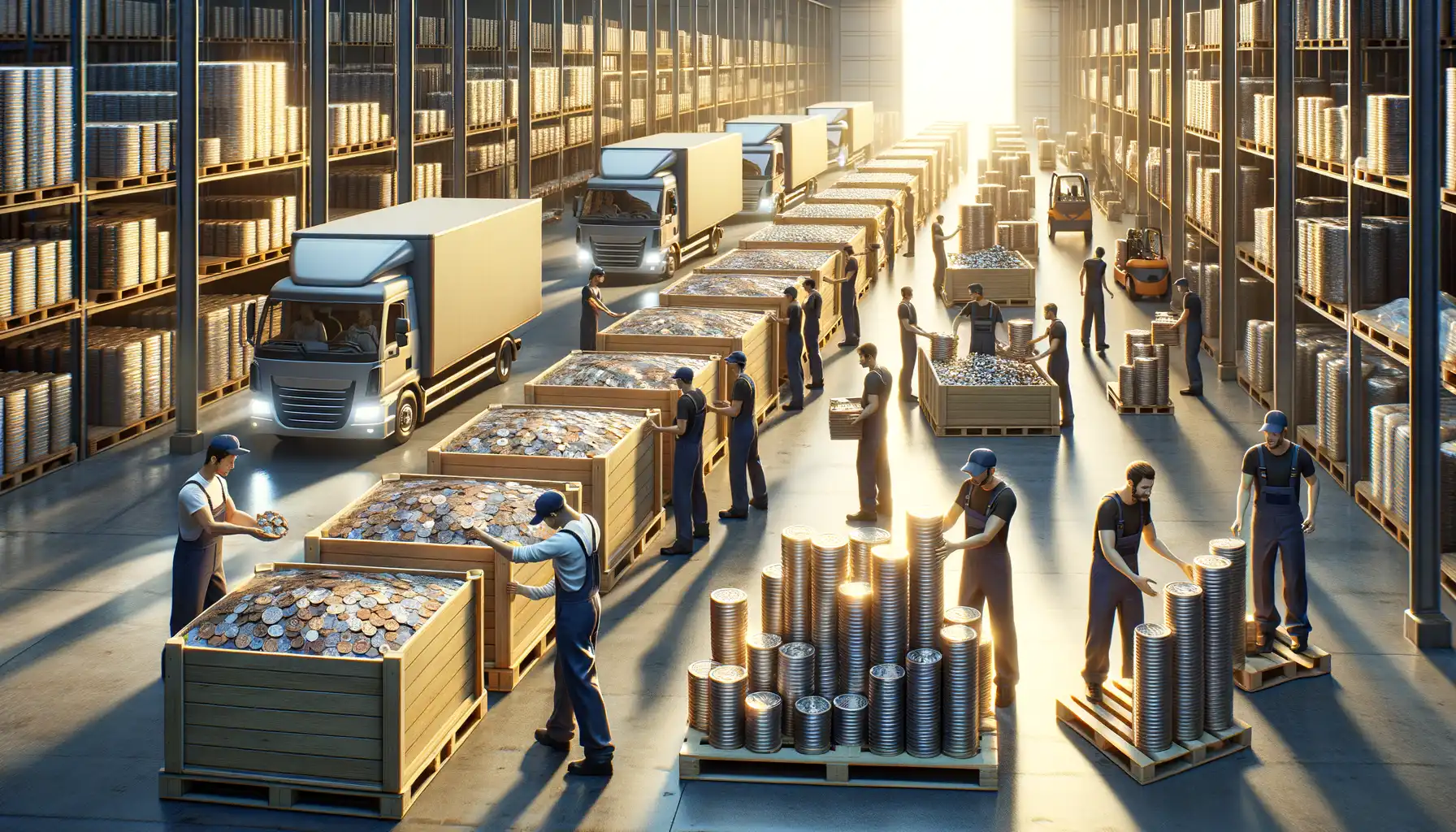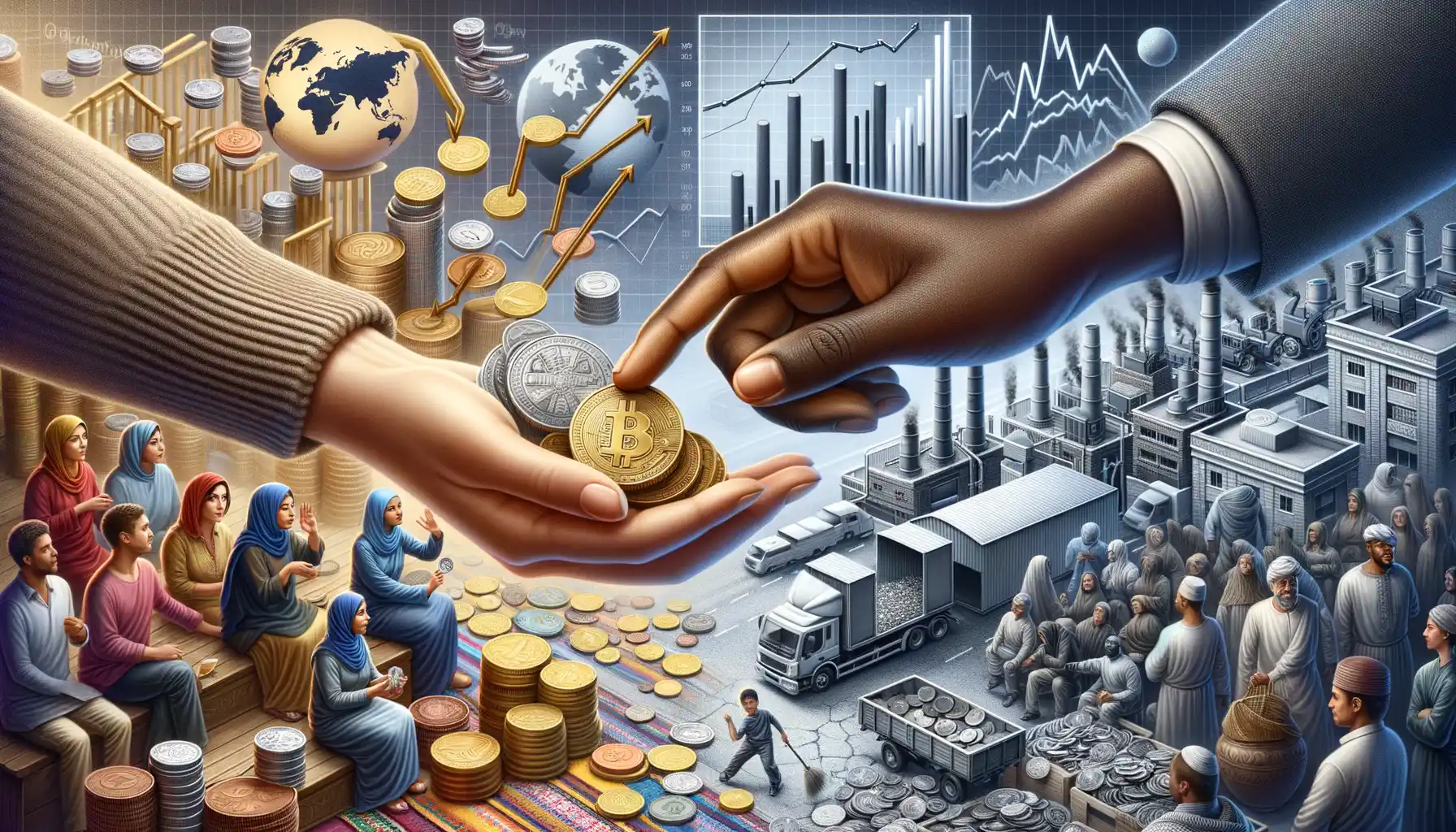The Process of Coin Minting
From Metal to Masterpiece
Ever wondered how a humble chunk of metal transforms into the shiny, jingling treasure in your pocket? The minting process is nothing short of magical, blending art, science, and precision. It all kicks off with raw materials—massive sheets or rolls of metal alloys like copper, nickel, or zinc. These metals are cut into tiny circular blanks, each destined to become a coin.
But don’t be fooled; these blanks are no ordinary discs. They must endure a fiery baptism! Heated to extreme temperatures, they’re softened just enough, then cooled and cleaned until they gleam—ready for their close-up. The next step? Enter the pressing phase. Here, every blank meets its destiny as it’s struck with staggering force by engraved dies, imprinting intricate designs, inscriptions, and ridges with mind-blowing detail.
- Fun fact: Did you know some coins are struck multiple times to get that perfect finish?
- Each strike involves pressures of up to 150 tons—talk about intense!
The result? Coins so detailed they almost tell a story—stories of history, culture, or even celebration. And that’s only half the adventure…
Quality Control Measures in Coin Production

Precision in Every Detail
Ever wonder how a coin feels so flawless in your hand? That’s no accident—it’s the result of rigorous quality control measures that rival the precision of a Swiss watchmaker. Each coin must meet exacting standards, and trust me, the journey from minting to approval is anything but lenient.
At every stage of production, coins are inspected for imperfections. Machines equipped with high-tech sensors scan for surface scratches, incorrect dimensions, or even the faintest misalignment in the design. It’s not just machines doing the heavy lifting, though. Human experts with eagle eyes scrutinize samples to ensure the shine, weight, and texture live up to the coin’s worth. A coin isn’t just currency—it’s an ambassador for an entire economy!
Key Steps in Quality Assurance
To guarantee perfection, every mint adheres to a checklist stricter than a librarian guarding rare books:
- Weight Checks: Each coin must weigh within micrometers of its standard. Too heavy? Scrap it. Too light? Same fate.
- Edge Inspections: Even the ridges lining the coin are scrutinized for sharpness and uniformity.
- Design Accuracy: Is the Queen’s portrait crisp? Is the logo flawless? No smudges allowed!
In this meticulous process, only the fittest coins survive. The rest? They’re melted down to try again, because in the world of minting, second chances exist—but only for metals, not mistakes.
Distribution and Transportation of Coins

The Roadtrip Begins: Coins Leaving the Mint
Have you ever wondered what happens after a coin is minted? Picture this: shiny new coins, fresh off the press, embarking on their very first adventure. From their birth at the mint, these little metal travelers are carefully packed into sturdy, secure containers—almost like suitcases for coins. Every step of their journey is meticulously coordinated to ensure they arrive safely at their destinations.
The U.S. Treasury (or your country’s central authority) plays the role of the ultimate travel agent here. They determine where these coins need to go and in what quantities. Regional Federal Reserve Banks, commercial banks, cash centers—these are some of the major stops on the map. It’s all about balance: making sure businesses and consumers have the quarters, dimes, or pennies they rely on every day.
How Are Coins Moved? A Peek Behind the Curtain
The logistics are fascinating. Coins don’t just “hop” onto a delivery truck. Nope! Their journey involves a mix of technology and good old human oversight:
- Armored vehicles ferry these metal treasures across cities and highways, under tight security.
- Each batch is tracked with precision—serial numbers, digital records, and even weight checks to prevent tampering.
- For international shipments, air transport comes into play, each bag of coins tightly packed and accounted for.
As these coins make their way into circulation, it’s almost poetic—their purpose unfolding as they fall into hands, pockets, and cash registers. Somewhere out there, your next coin might already be on its journey to meet you.
Circulation of Coins in the Economy

How Coins Flow Through Everyday Life
Coins aren’t just shiny keepsakes; they’re the unsung heroes of daily transactions. The journey of a coin truly begins when it lands in your pocket, but its adventure is far from simple or predictable.
Imagine this: the same quarter you use to pay for parking could later buy a child’s candy bar or be dropped into a wishing fountain. Coins weave through our lives, touching countless hands, crossing cities, and even state lines. They’re a silent participant in everything from bustling farmer’s markets to vending machines in quiet break rooms.
Here’s what makes their movement fascinating:
- Retailers rely on coins for exact change, keeping lines moving and customers happy.
- Banks redistribute coins, ensuring businesses have enough “small change” ready for cash transactions.
- Even street performers and charity boxes depend on the jingle of coins to thrive.
But coins aren’t just “spent and forgotten.” Sometimes they hibernate — tucked into piggy banks or jars — before re-emerging into the world during a cleaning spree or a child’s treasure hunt. Each coin tells countless stories, connecting strangers in subtle yet powerful ways.
The Invisible Hands Guiding Their Path
Ever wonder who ensures there are always enough coins circulating? Behind the scenes, the U.S. Mint works alongside banks and retailers to balance supply and demand. When holiday shopping spikes, for instance, more coins might be needed in circulation. Conversely, when digital payments dominate, coins often retreat into people’s storage, waiting for their moment to shine again.
This constant flow keeps the economy humming. Coins may be small, but they shoulder an enormous responsibility–one penny at a time.
The Lifecycle and Future of Coins

From Shiny New to Timeworn: The Journey of a Coin
Have you ever thought about the **life of a coin** beyond your pocket? Like an actor on the world stage, each coin has its own unique story—and it’s far from dull! A coin isn’t just born shiny at the mint and stays that way forever. Over years (or even decades!), it passes through thousands of hands, quietly weaving itself into the economy.
Every coin begins as a gleaming, pristine piece of metal. But life’s hard knocks—literally—take their toll. **Scratches, dents, and fading engravings** mark its passage. Some are spent countless times at bustling markets, jingling in cash registers. Others travel internationally, passed between travelers and foreign businesses. Imagine that one-quarter you’ve been holding—it might have paid for a soda in Chicago last week and a souvenir in Orlando today.
But not every coin gets to grow old. Some are melted down to be reborn, others are pulled from circulation due to damage. And yes, technology is creeping in—think contactless payments and digital wallets. Can coins compete with this rising tide? Their journey isn’t over yet, but the future is bubbling with change.
A Brave New World for Coins?
As we embrace a digital-first world, the role of physical coins is shifting. Yet, they remain cultural icons, storytellers of history preserved in metal. Have you noticed how **commemorative coins** capture important events, like a nation’s independence or a royal coronation? It’s like holding a time capsule in your palm!
But why stop there? Here’s what the evolving future might look like for coins:
- Limited-edition collectors’ pieces: Coins may pivot to serve enthusiasts rather than everyday transactions.
- Eco-friendly materials: As sustainability becomes key, lighter metals or recycled alloys could reduce environmental impact.
- A hybrid existence: Could coins someday work alongside cryptocurrencies, blending tradition with innovation?
One thing’s certain: no matter where coins go next, they’ve left an indelible imprint on human history—and your daily latte runs!